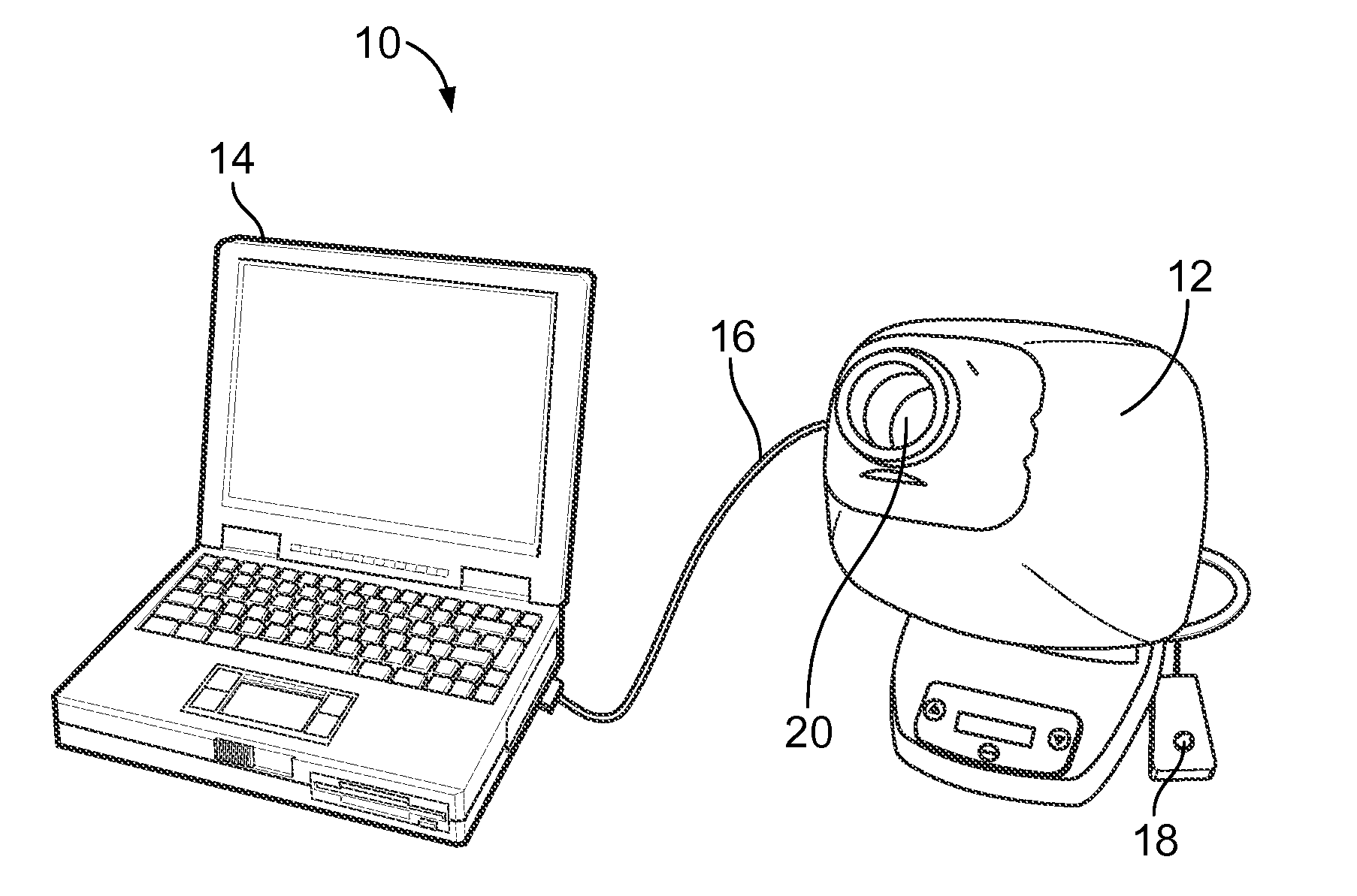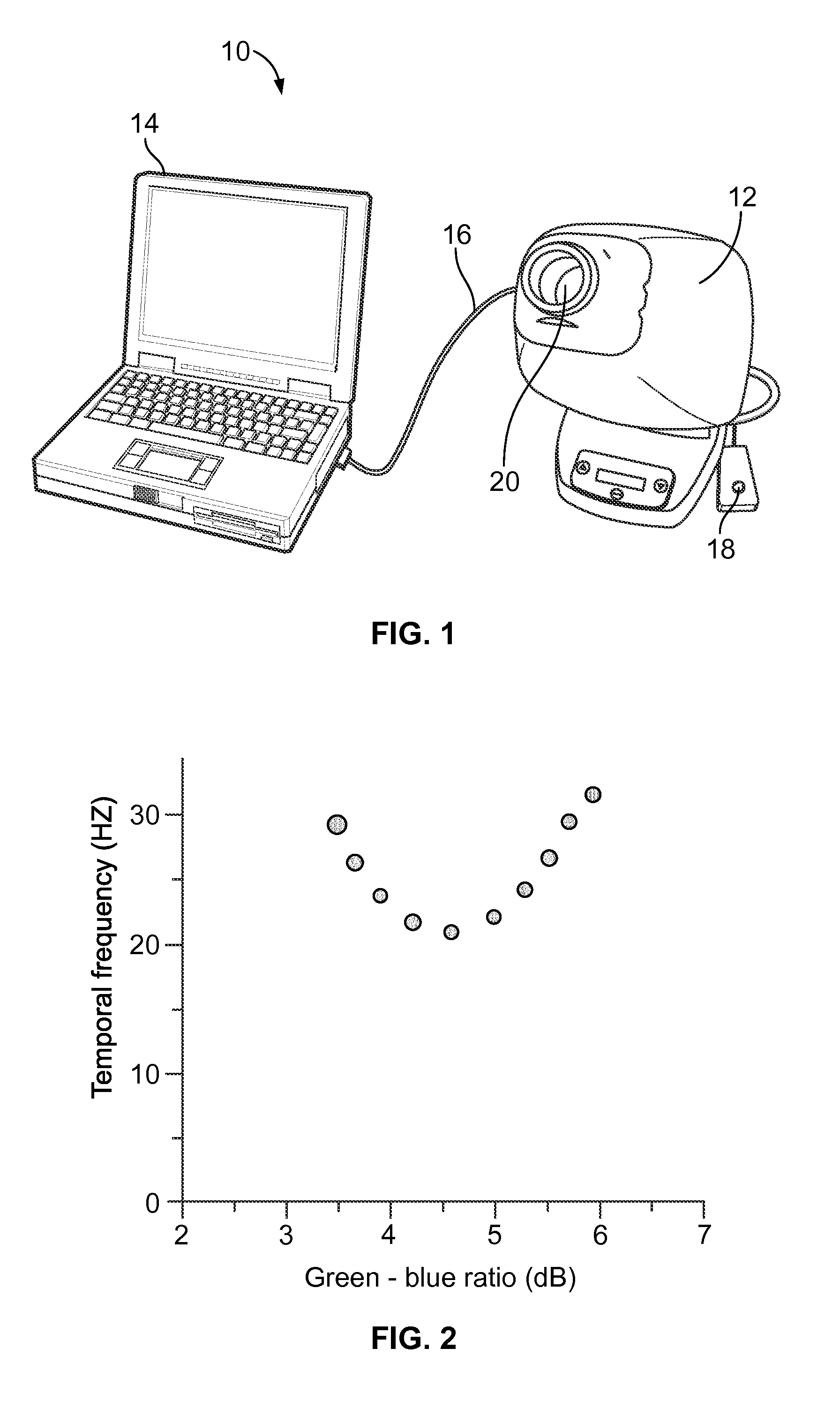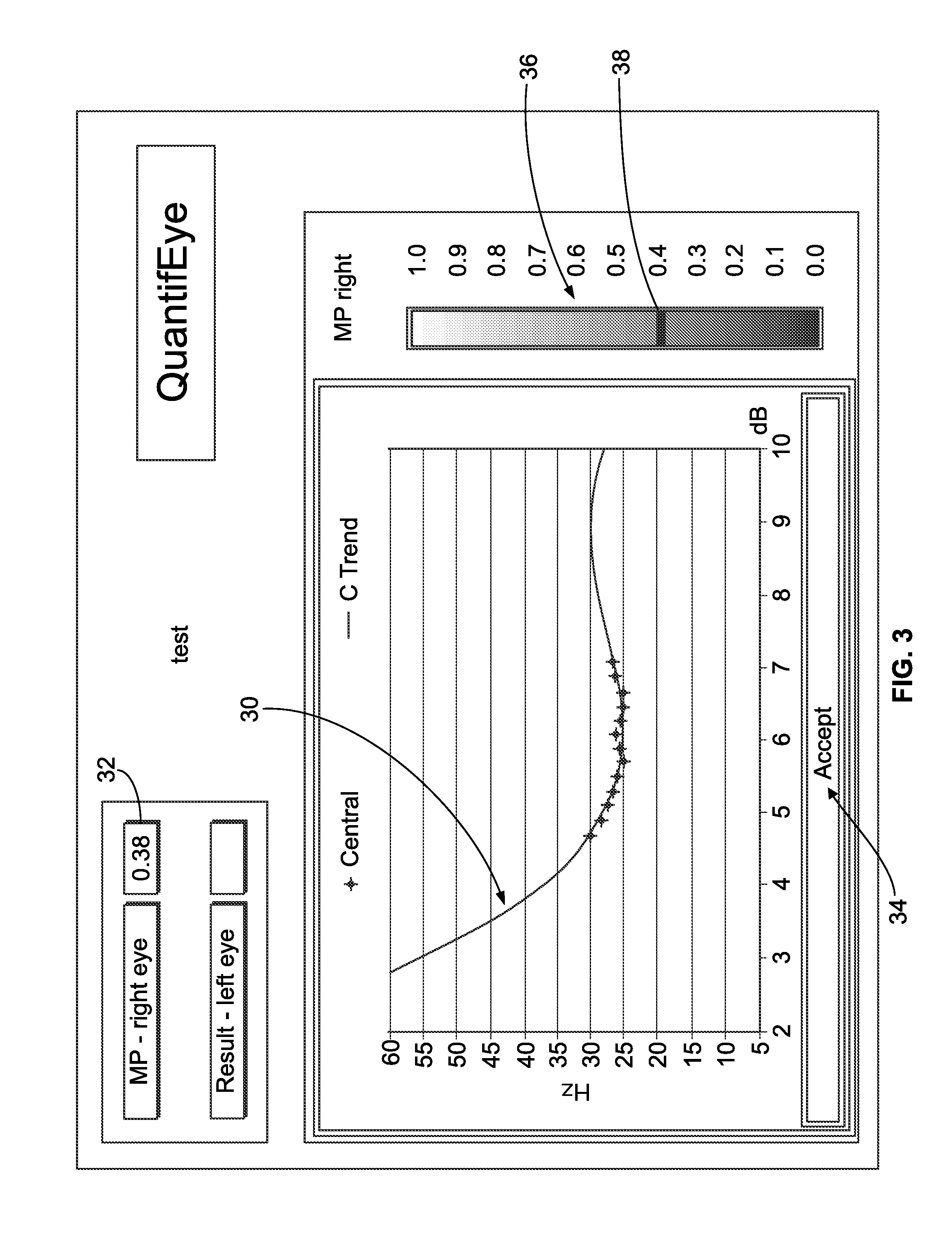Macular pigment measurement device with data quality indexing feature
a technology of data quality and indexing feature, which is applied in the field of macular pigment optical density measurement instrument, can solve the problems of affecting vision, affecting eye sight and vision, and affecting the ability of people with macular degeneration to read, recognize faces, drive safely on unfamiliar surfaces,
- Summary
- Abstract
- Description
- Claims
- Application Information
AI Technical Summary
Benefits of technology
Problems solved by technology
Method used
Image
Examples
Embodiment Construction
[0035]FIG. 1 illustrates a MPOD detection system 10 that includes a heterochromatic flicker photometry (HFP) instrument 12 and a computer 14 for providing inputs and viewing outputs on its display. The HFP instrument 12 is typically electronically coupled to the computer 14 via a wire connection 16, although a wireless connection is possible as well. As shown, the HFP instrument 12 is a commercially available from ZeaVision LLC, Chesterfield, Mo., and is sold under the trademark QuantifEYE®.
[0036]The HFP instrument 12 includes an input device 18 allowing a test subject to provide an input when he or she perceives a flicker during the test. Generally, the HFP instrument 12 has a target arranged to be viewed by the test subject with one eye (left or right) through the viewing window 20. The target includes a blue light and a green light arranged to undergo a modulation in opposing phases. The modulation decreases from an initial modulation frequency at which an initial flicker of the ...
PUM
 Login to View More
Login to View More Abstract
Description
Claims
Application Information
 Login to View More
Login to View More - R&D
- Intellectual Property
- Life Sciences
- Materials
- Tech Scout
- Unparalleled Data Quality
- Higher Quality Content
- 60% Fewer Hallucinations
Browse by: Latest US Patents, China's latest patents, Technical Efficacy Thesaurus, Application Domain, Technology Topic, Popular Technical Reports.
© 2025 PatSnap. All rights reserved.Legal|Privacy policy|Modern Slavery Act Transparency Statement|Sitemap|About US| Contact US: help@patsnap.com



